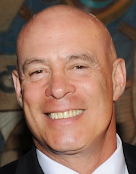After-death communications (ADCs) come in numerous forms but always involve a deceased soul communicating with a living person. Thus, the implication is that the deceased person has a consciousness that is still functional, has survived the death of the physical body, and is contacting (or attempting to contact) a living person. There are sometimes verifiable eyewitnesses, such as those who have experienced an after-death communication, and those who have been with someone who has received an ADC when it happened. This type of witness testimony can be difficult to scientifically prove since, like NDEs, it is based on experiencer testimony. The data cannot be directly observed by the researcher but can only be culled from the narrative of the person who received the communication.
There are numerous ways in which the surviving consciousness of deceased people will attempt to bridge the dimensional gap and contact the living. According to Marilyn Mendoza, PhD in Psychology Today, there are twelve main categories of ADCs, including sensing a presence, hearing a voice, feeling a touch, smelling a fragrance, visual experiences, and visions. Other categories include twilight experiences that happen just as a person is dozing off to sleep, just waking up, or meditating/praying. ADCs can sometimes be out-of-body experiences, where the living person leaves their body and visits the deceased person wherever they are. This can include physical phenomena such as flashing lights, objects falling off shelves, or appliances turning on.
The ADC category Mendoza discusses that happened to me is telephone calls. Mendoza states, “These are said to be among the more frequently occurring signs. Calls may occur while awake or asleep. People have reported their phones ringing and hearing messages from the deceased.” In my case, my landline phone rang, waking two people, and I had a full conversation with my deceased grandfather.
As someone who has experienced both an NDE and an ADC, providing this best evidence is what I will attempt to do in layman’s language in the following pages. It is not an academic or scientific dissertation on proof of an afterlife, not only because I am not a scholar or a scientific researcher, but also, and most importantly, because absolute proof doesn’t exist. What does exist is credible eyewitness testimonial evidence.
Elizabeth G. Krohn and Jeffrey J. Kripal of Changed in a Flash: One Woman's Near-Death Experience and Why a Scholar Thinks It Empowers Us All (North Atlantic Books, 2018). Krohn received an award from the Bigelow Institute for Consciousness Studies for her essay “The Eternal Life of Consciousness,” available at https://bigelowinstitute.org/contest_winners3.php. Footnotes in the essay are not included in these excerpts from Changed in a Flash.










